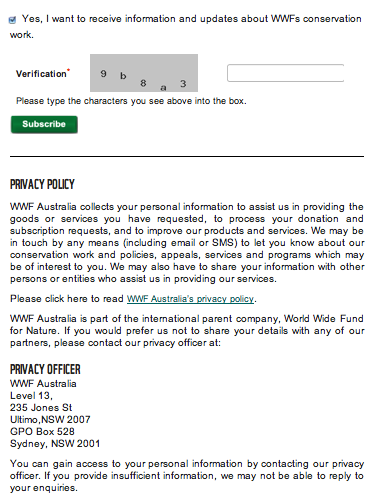I know this is considered to be a dry and boring subject, so I’ll try to keep it short, but email opt in and spam compliance for email marketing is absolutely mandatory – legally, ethically and responsibly.
I come across this problem a lot in my professional career as an internet and email marketer. Companies are well aware of SPAM, how could they not be, every person who owns a computer (and uses it) has been touched by spam, but they don’t seem to consider themselves spammers. However, I have come across large, high profile organisations (who will remain nameless) who were acting on the assumption that because a customer, member or prospective client has put their name and email on a piece of paper and it was collected, that this constitutes an opt in.
Let me clear this up for you; Unless you have added a tick box to that piece of paper, that says something along the lines of “Yes, I want to receive email communications from X company” then they have not opted in to receive emails from your business. This should also be accompanied by a link to your privacy policy and a disclaimer (see example below).
If, on your website or paper based form, you have a tick box to accept your business’ standard terms and conditions, this also does not constitute a legal opt in to receive email communications.
If you have an eCommerce business and your customer buys from your online store and accepts the terms and conditions to proceed to checkout, this gives you permission to send them transactional emails (like an email invoice or a shipping notification update) but unless you have added a tick box explicitly asking the customer if they want to receive email communications from you, they have not opted in.
Standard practice for eCommerce examples would be to add the tick box say “Yes, I want to receive email communications from X company” underneath the email form field. You may also find the email opt in at the end of the checkout process alongside the terms and conditions, but there must be two individual opt in tick boxes for you to be spam compliant.
Jeremy Malcolm describes spam as “spam can be defined as unsolicited bulk (and usually, but not necessarily, commercial) electronic mail“, the CAUBE-AU (the Coalition Against Unsolicited Bulk Email, Australia) defines spam very broadly as any electronic mail message that is:
- transmitted to a large number of recipients; and not explicitly and
- knowingly requested by some or all of those recipients.
My advice would be – be safe, not sorry. Spam compliance is not difficult. You add an opt in to your newsletter form on your website and on any paper based forms you have and you have an unsubscribe link on all of your email communications. I haven’t gone into detail here but your unsubscribe link on your emails is also mandatory and if someone unsubscribes, you have a legal obligation to remove them in a timely manner (hopefully before another email is sent).
There are so many easy to access resources about Spam. You can find them easily by doing a google search for “Email spam compliance”. The Australian Institute of Criminology has pages on spam and you can always turn to the Internet Advertising Bureau IAB – but I was surprised at how hard it was to find.
So, based on the above information, is your business spam compliant for email?


Trackbacks/Pingbacks